Step into Xi’an’s imperial past and experience over 3,000 years of Chinese civilization.
Dive into
History & Ancient Culture
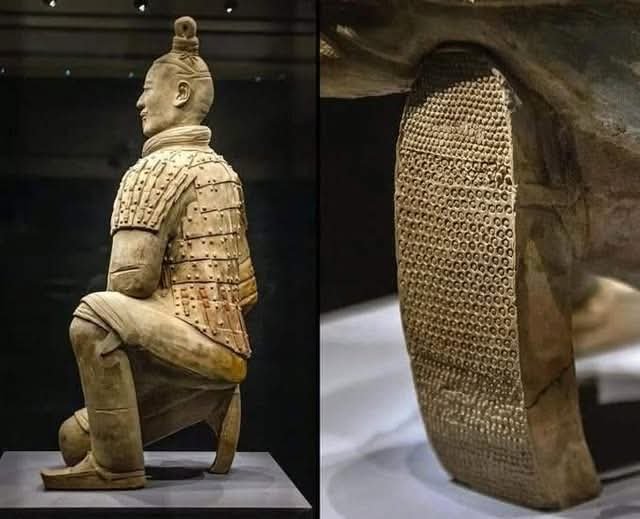
Xi’an(once called Chang’an) is one of the oldest cities in China, the starting point of the Silk Road and home to the UNESCO World Heritage set Terracotta Army of Emperor Qin Shi Huang.
Terracotta Warriors
A World Wonder You Can’t Miss

Dating back over 2,000 years, the Terracotta Army is often called the “Eighth Wonder of the World”—and rightly so. This is the must-see attraction in Xi’an, located in Lintong District, about an hour from the city center.
Inside the massive museum, you’ll find thousands of life-sized clay soldiers, each with distinct facial features and postures, lined up in battle formations.
It’s not just a monument—it’s a glimpse into the grand vision of China’s first emperor, Qin Shi Huang.
🚇 Getting There

Take Metro Line 9 to Huaqing Pool Station (Exit C),Then transfer to Bus 306 or 613 directly to the site

🎫 Tickets
Price:¥120($17) per adult
Booking by Official QR


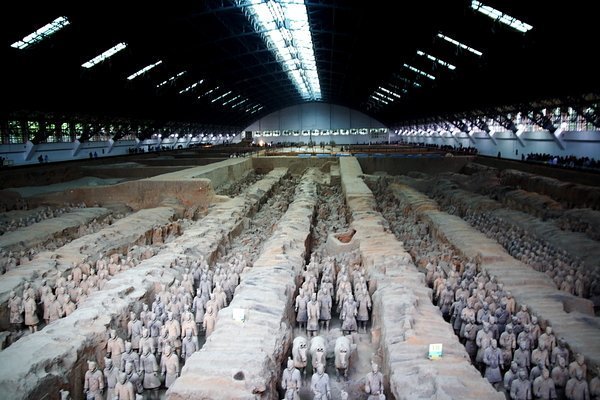
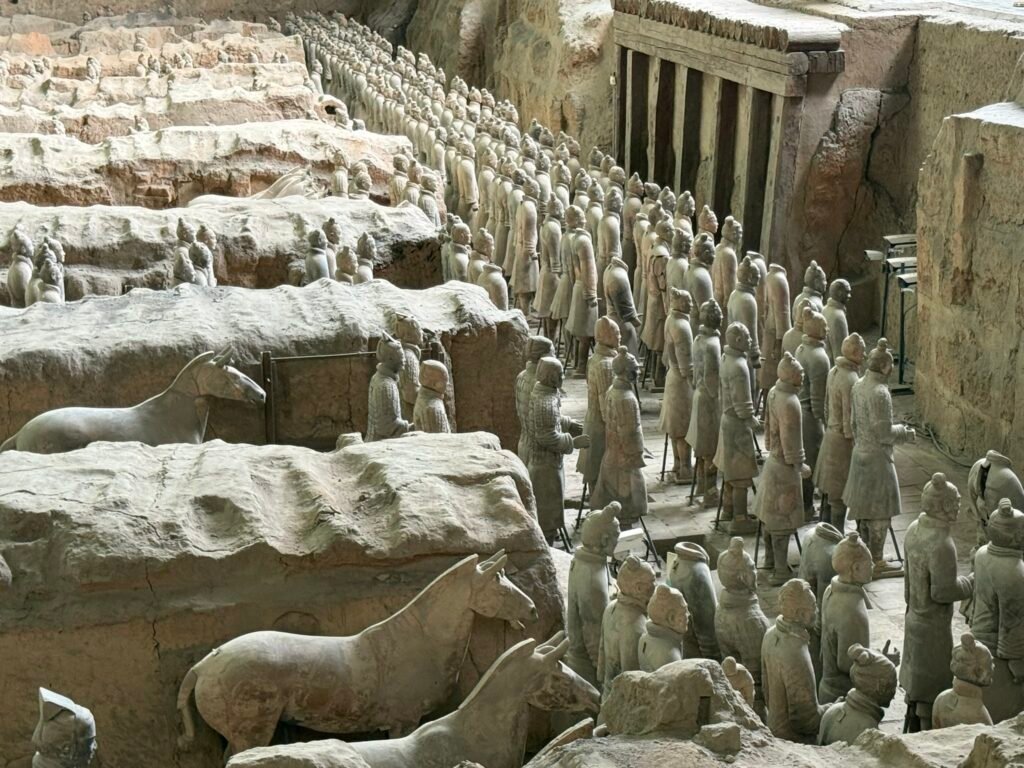

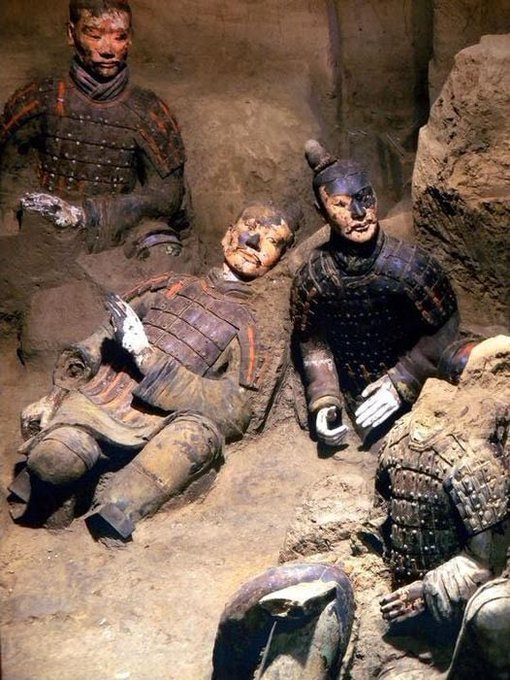
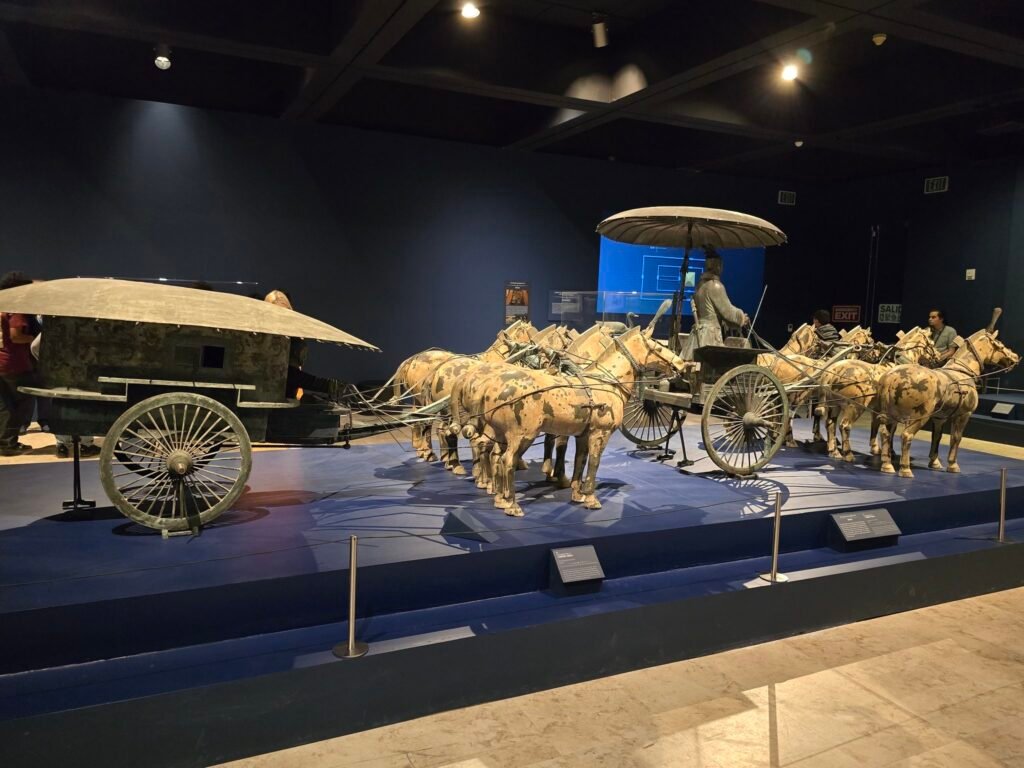
🎯 What to See
- Pit 1: The star of the show. Covering 14,000 sqm, it holds over 6,000 infantry and chariot warriors arranged in powerful rectangular formations. Absolutely breathtaking.
- Pit 2: Roughly 6,000 sqm, home to a mixed unit of archers, cavalry, chariots, and infantry. You’ll see how different units were strategically organized.
- Pit 3: Smallest at 500 sqm, believed to be the command center, with only 68 figures. It’s the only pit untouched by fire damage, so some warriors still retain faint traces of original paint, which is rare and fascination.
- Exhibition Hall: Displays restored warriors and artifacts, offering close-up views of their details, hairstyles, weapons, and armor.
- Lishan Garden & Bronze Chariots: The ticket includes access to this section. Take the free shuttle from the main entrance—it’s worth it. Don’t miss the two full-sized bronze chariots, buried as part of the emperor’s funeral procession. These are the real deal, not replicas.
- Chariot No. 1 has a retractable umbrella that acted as both shade and shield—engineering genius.
- Chariot No. 2 features tinted windows and a ventilation system, designed for winter warmth and summer coolness. Talk about ancient luxury!

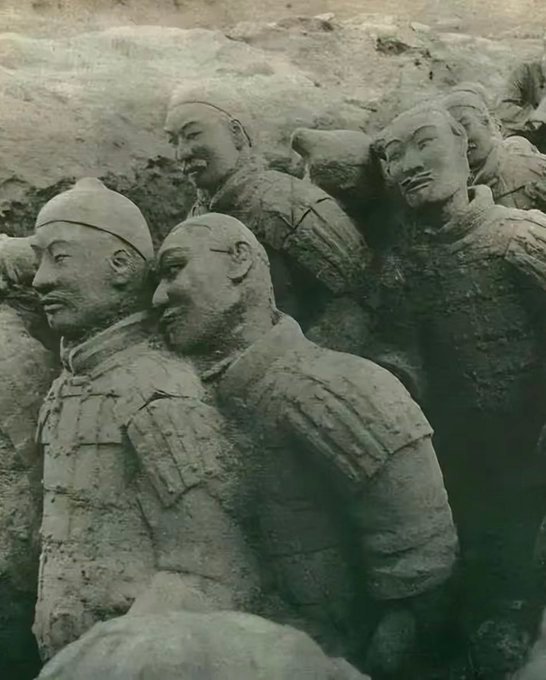

📸 Highlights & Photo Tips
- Head to the viewing platforms inside Pit 1 for that jaw-dropping panoramic shot. The scale, lighting, and arrangement are incredibly photogenic.
- This spot is wildly popular on Instagram and Chinese platforms like Xiaohongshu—we’re talking viral levels.
✅ Pro Tips
- Go early: Be there at opening time to avoid the biggest crowds.
- Skip the “fake guides” outside. Official Chinese-language guides are ¥60/person and available in Pit 1. No English tours by default, but you can rent English or Japanese audio guides at the same spot for ¥40.
- Want a deeper experience? Book a certified English-speaking guide in advance (recommended if you love history).
❌ What Not to Do
- Don’t bother buying a ticket to “Qin Shi Huang’s Mausoleum” next door—it’s just a large earthen mound with no interior access. You can get a good photo from the outside for free.
- Avoid buying souvenirs near the site—most are overpriced and low quality. You’ll find better (and cheaper) options back in Xi’an city shops.
Xi’an City Wall
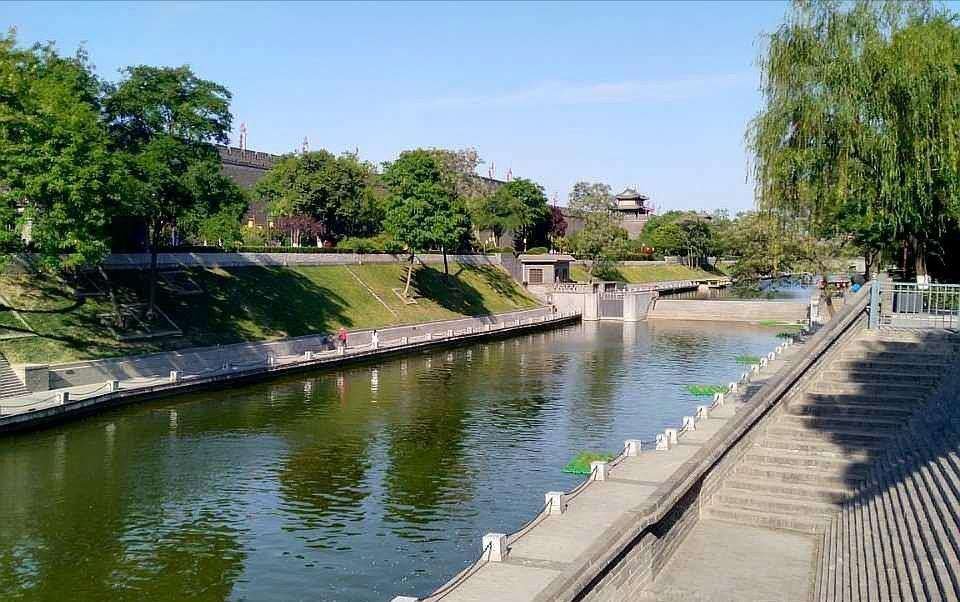
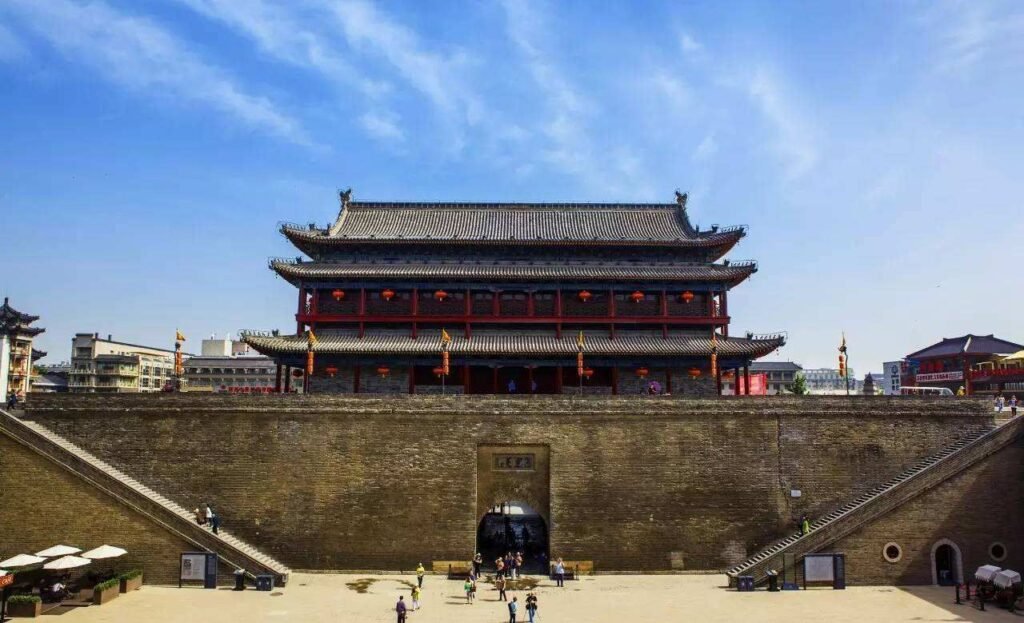
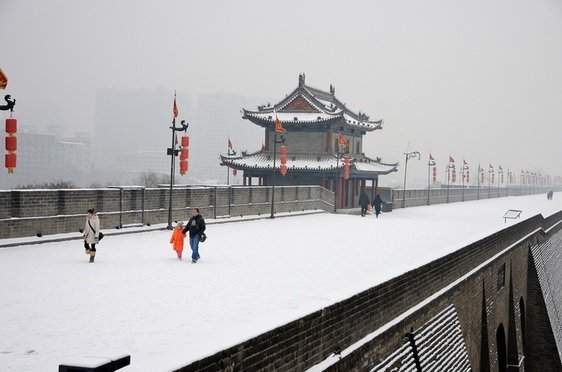
Ancient Strength, Modern Views
The Xi’an City Wall is one of the largest and best-preserved ancient city walls in all of China. Built over 600 years ago during the Ming Dynasty, it stretches for nearly 14 kilometers, completely encircling the old city. Massive, sturdy, and beautifully restored, it offers a rare chance to literally walk (or bike!) atop history.
🚲 How to Explore It
The most scenic section starts at Yongning Gate (South Gate). Come here around sunset—it’s cooler, less harsh on photos, and the lighting is incredible. As the sky turns golden, the wall lights up with a dramatic night show that blends perfectly with the ancient towers.
You can either walk or rent a bike and head toward Hanguang Gate, which is the most iconic stretch. The ride is flat and easy, and you’ll get unbeatable city views on both sides: ancient rooftops inside the wall, and modern buildings just beyond.
🚇 Getting There
- Take Metro Line 2 to Yongningmen Station. Exit signs clearly point toward the wall entrance.
🎫 Tickets
- Entry fee: ¥54/person
- Book online or buy on-site. Bring ID if you want to rent a bike.
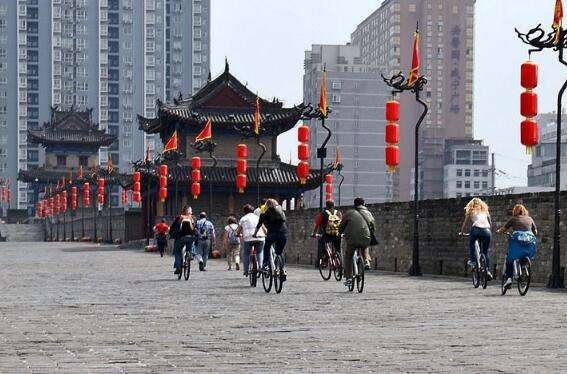
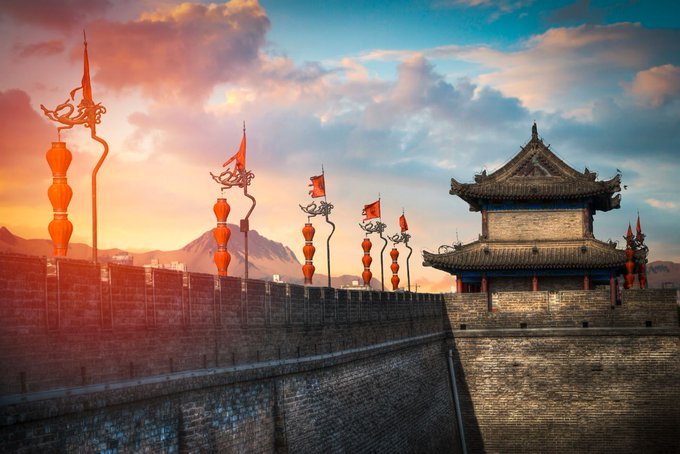
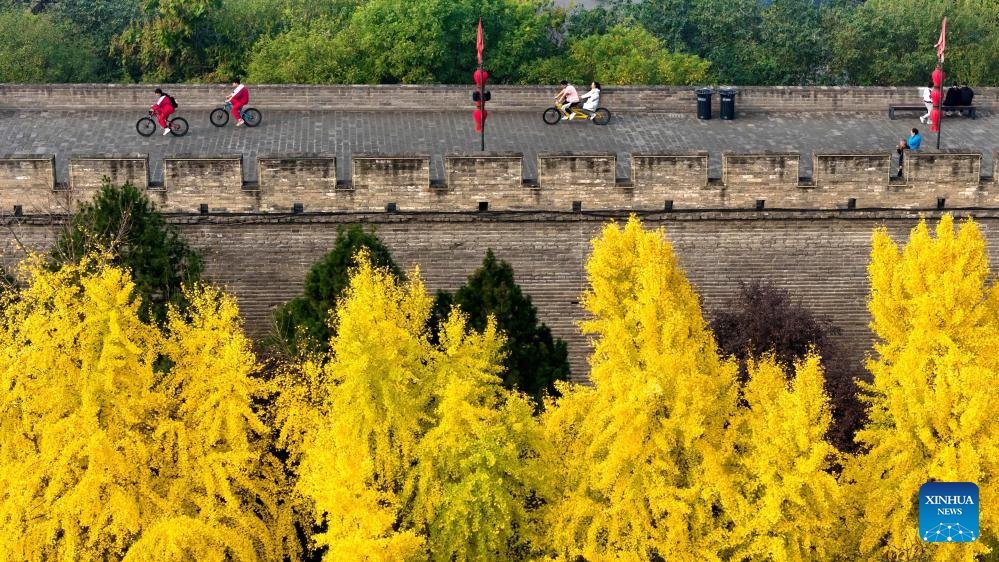
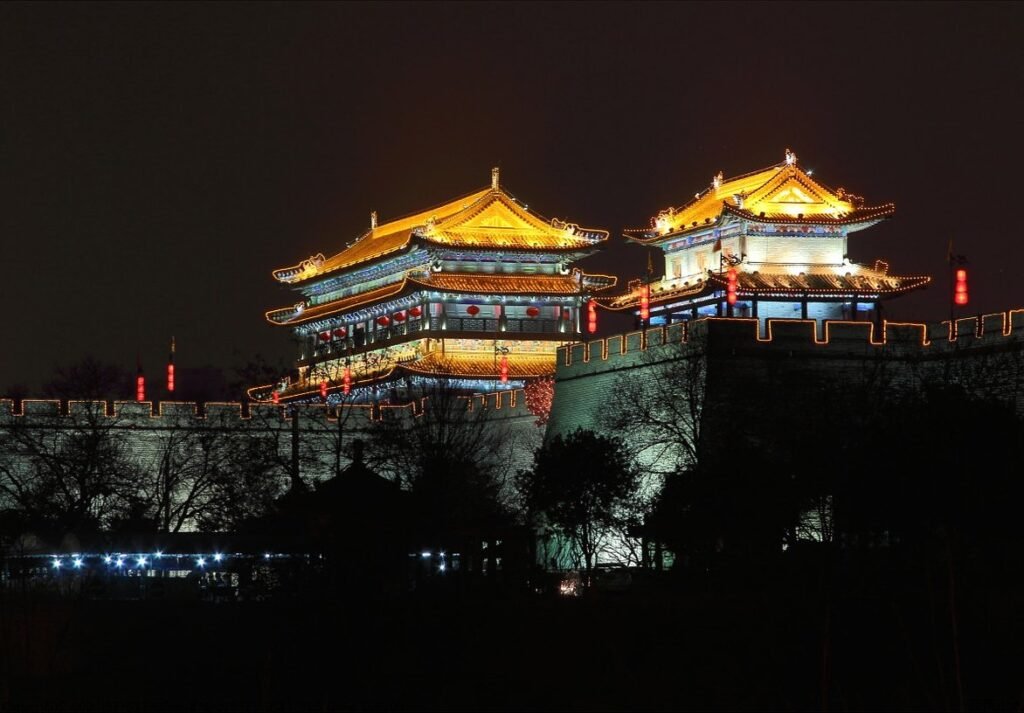
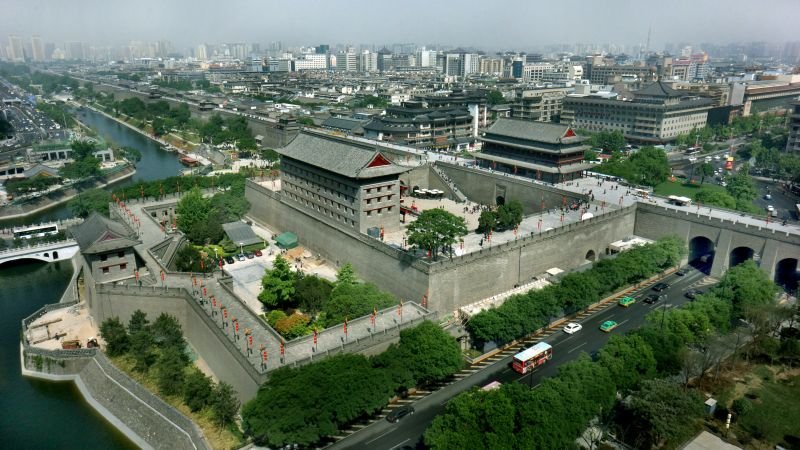
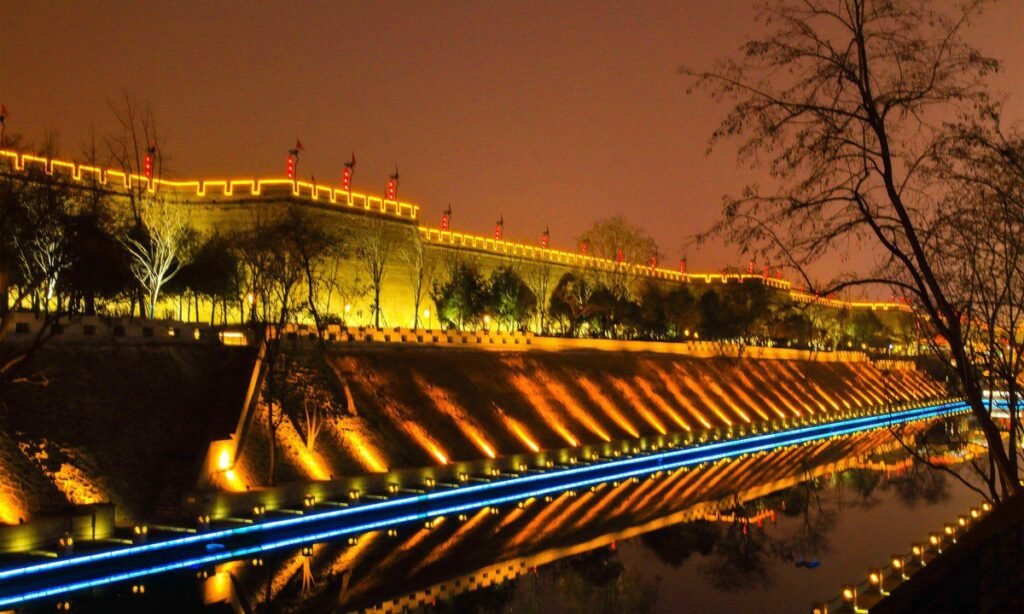
📸 Highlights & Photo Tips
- Ride or stroll along the wall for a 360° view of Xi’an—you’ll see temples, towers, neighborhoods, and skyscrapers all in one frame.
- At Wenchang Gate, you can spot a group of elegant old buildings that belong to the Beilin (Stele Forest) Museum—quiet, shaded, and photogenic.
- Want that viral photo? Head to Anding Gate (West Gate)—less crowded and perfect for golden hour portraits.
✅ Insider Tips
- Avoid midday heat—walls are exposed and there’s little shade. Sunset is not only cooler but way more photogenic.
- Hanfu photo shoot? Yes please. Rent a traditional Chinese robe and snap a few photos for a real “time travel” vibe. There are shops near the gate that can help dress you up.
- Bike rentals (cash only):
- ¥45 for 3 hours (single bike)
- ¥90 for 3 hours (tandem)
- ¥100 deposit required — bring cash! No cards or mobile pay accepted.
Big Wild Goose Pagoda
The World Heritage List,Originally built in 652 of the Tang Dynasty
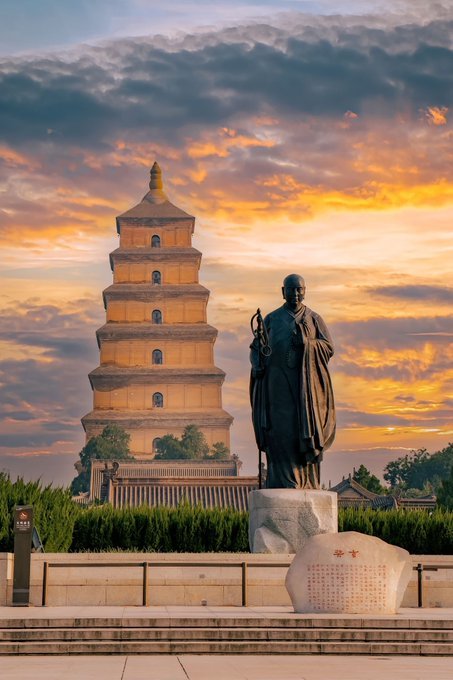
The Big Wild Goose Pagoda (Dayan Ta) is one of Xi’an’s most iconic landmarks, nestled within the grounds of Da Ci’en Temple.
Built in the Tang Dynasty, it was originally constructed by the legendary monk Xuanzang—the real-life inspiration for Journey to the West—after he returned from his epic pilgrimage to ancient India.
Xuanzang brought back hundreds of Buddhist scriptures, relics, and statues. The pagoda was built to preserve and honor them.
🏯 What’s Inside the Pagoda?
The tower stands 64.5 meters high, with seven floors accessible by a steep staircase.
- 2nd Floor: Houses a statue of the Buddha (Shakyamuni).
- 3rd Floor: Displays an original fragment of a palm-leaf scripture (Baiyejing) that Xuanzang carried back from India—a rare and precious artifact.
- 4th Floor: Enshrines holy Buddhist relics.
- 5th–7th Floors: Best for panoramic views of the surrounding temple complex and city skyline.
🎶 Don’t Miss the Fountain Show
Just north of the pagoda is Asia’s largest music fountain plaza. It’s a spectacle of water, light, and sound, set to classical and contemporary music. Shows run daily at 12:00, 16:00, 19:00, and 21:00.
If you’re visiting in summer, go for the 9 PM show—cooler weather, better lights, and more atmosphere. Arrive 30 minutes early to grab a good spot!
📸 Highlights & Photo Tips
- At night, the pagoda is beautifully lit—golden, glowing, and surrounded by lanterns and fountains.
- The musical fountain show is great for family outings and long-exposure night shots.
- For the best photo angle, head to the rooftop terrace on the 4th floor of Joy City Mall, right next to the pagoda—it’s free, peaceful, and amazing at night.
- Summer nights are lively, with street food, music, and locals relaxing in the square.
🚇 Getting There
Take Metro Line 3 or Line 4 to Dayanta Station. Exit signs will guide you straight to the plaza and temple.
🎫 Tickets
- The pagoda is inside Da Ci’en Temple.
- Buy a combo ticket for ¥30 (temple) + ¥25 (pagoda tower).
- The fountain plaza and exterior areas are free and open to the public all day.
Shaanxi History Museum
A Time Capsule of Chinese Civilization
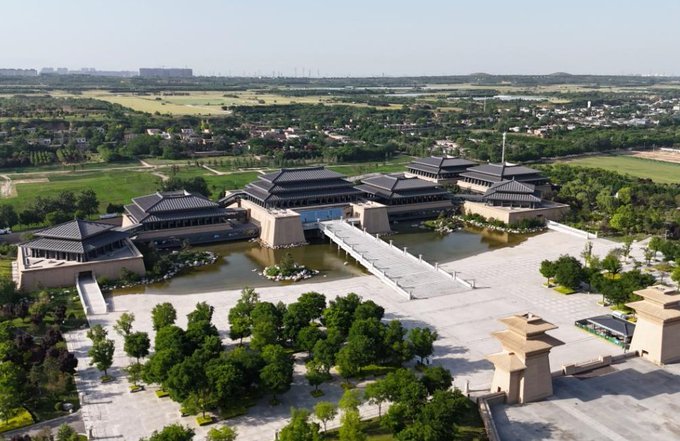
The Shaanxi History Museum is one of China’s most important and respected museums—and was actually the first large-scale modern national museum in the country.
Its collection is massive: over 1.7 million artifacts spanning a jaw-dropping one million years of history. From prehistoric tools to glorious treasures of the Qin, Han, Tang, and Song dynasties, this is where you go to truly understand the depth and richness of Chinese civilization.
Whether you’re a history buff or just museum-curious, this place is a must.
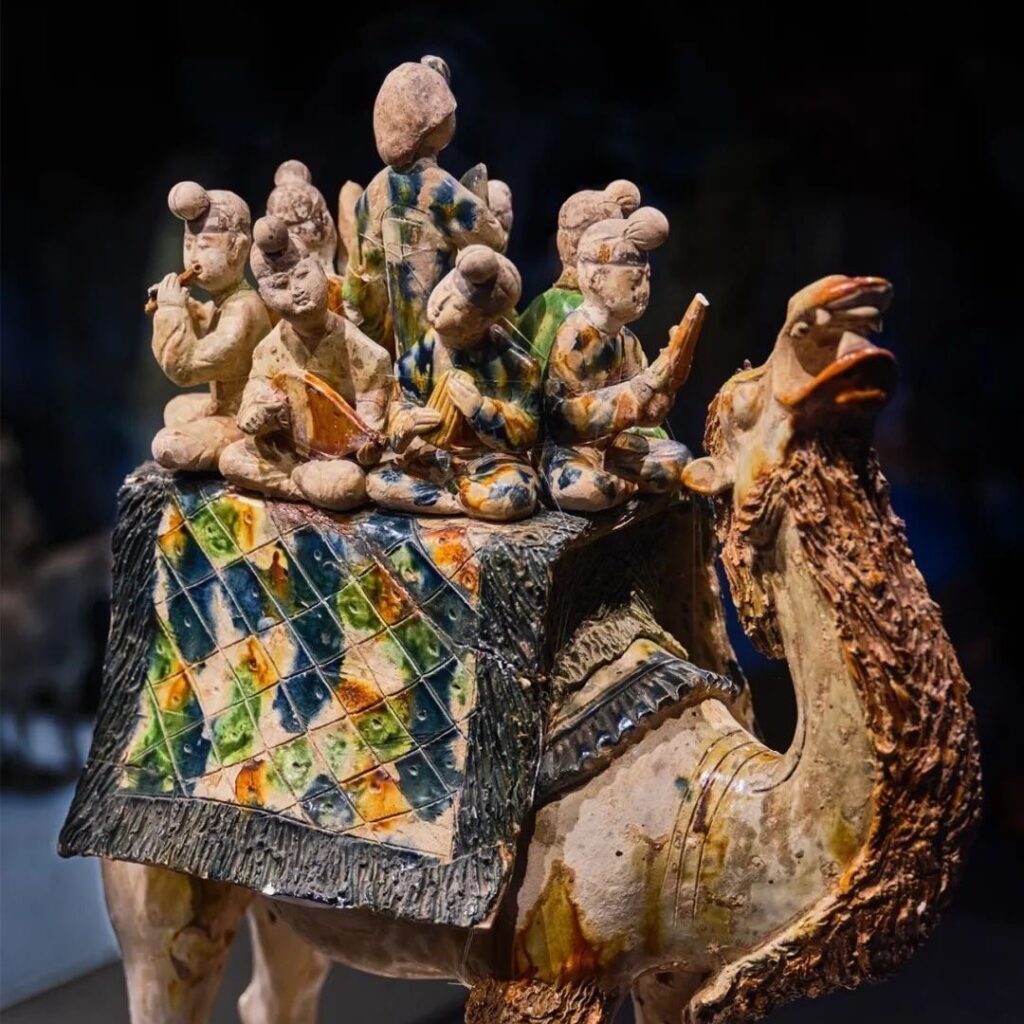
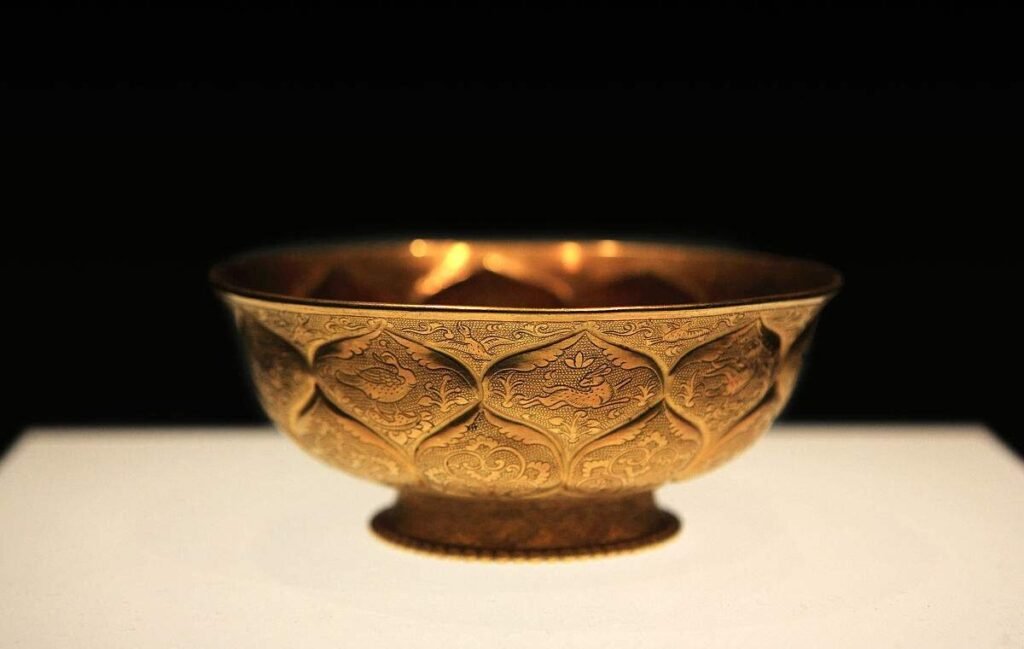
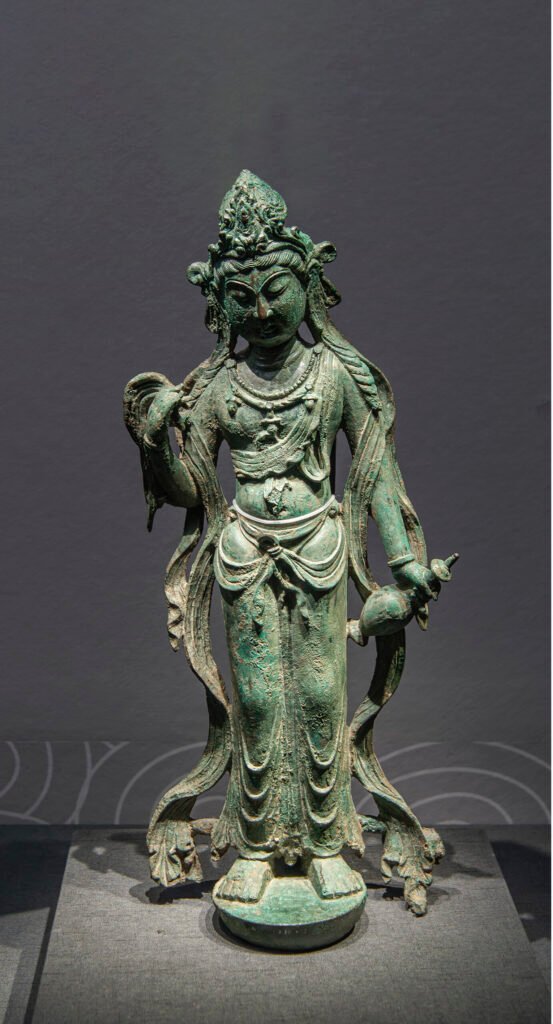
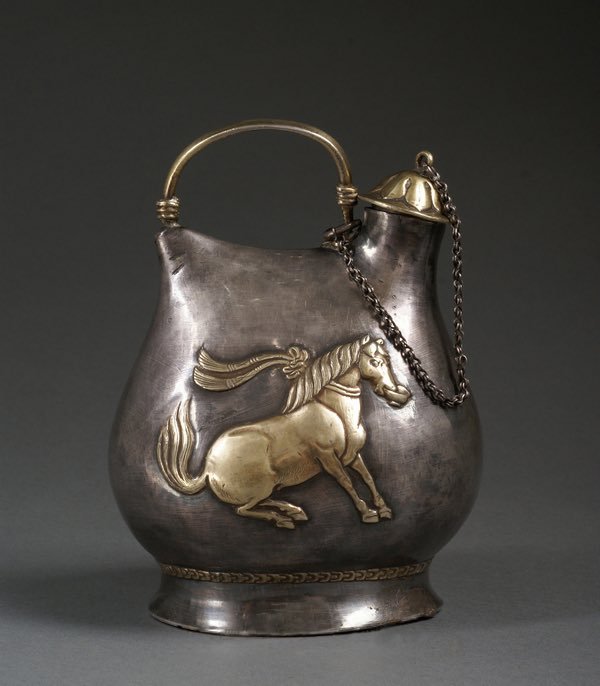
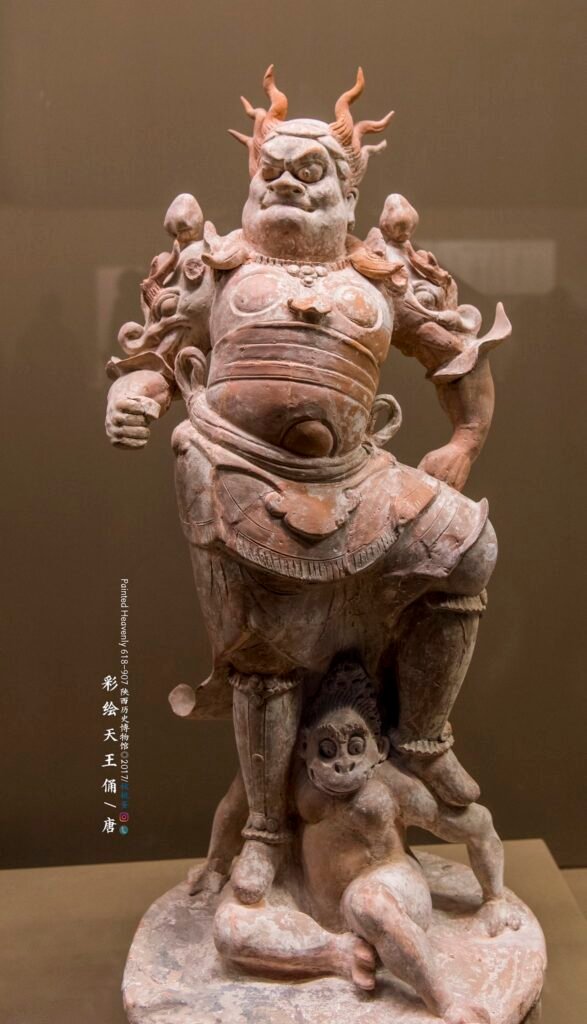

📸 Highlights & Photo Tips
- Photography isn’t allowed inside (to protect delicate artifacts), but the museum’s exterior is beautiful—classic Tang-style architecture, peaceful courtyards, and elegant halls.
- Great spot for serene portraits or architecture lovers.
✅ Visitor Tips
- Book as early as possible—tickets often run out within minutes.
- If you want an English-speaking guide, select the guided tour option when booking your ticket (extra fee). It’s totally worth it if you enjoy storytelling and deeper context.
🚇 Getting There
- Metro Line 2 → Get off at Xiaozhai Station (not Lintong Road—likely a typo)
- Several city buses also stop nearby. Ask your hotel to check the best route based on your location.
🎫 Tickets
- Free admission, but online booking is mandatory.
- Reservations open 5 days in advance at 5:00 PM on the official WeChat mini-program (search: 陕西历史博物馆).
- No tickets are available on-site—walk-ins not allowed.
- Couldn’t get a ticket? Don’t worry! Head to the Xi’an Museum instead. It’s smaller but still excellent, also free, and much easier to access on short notice.
